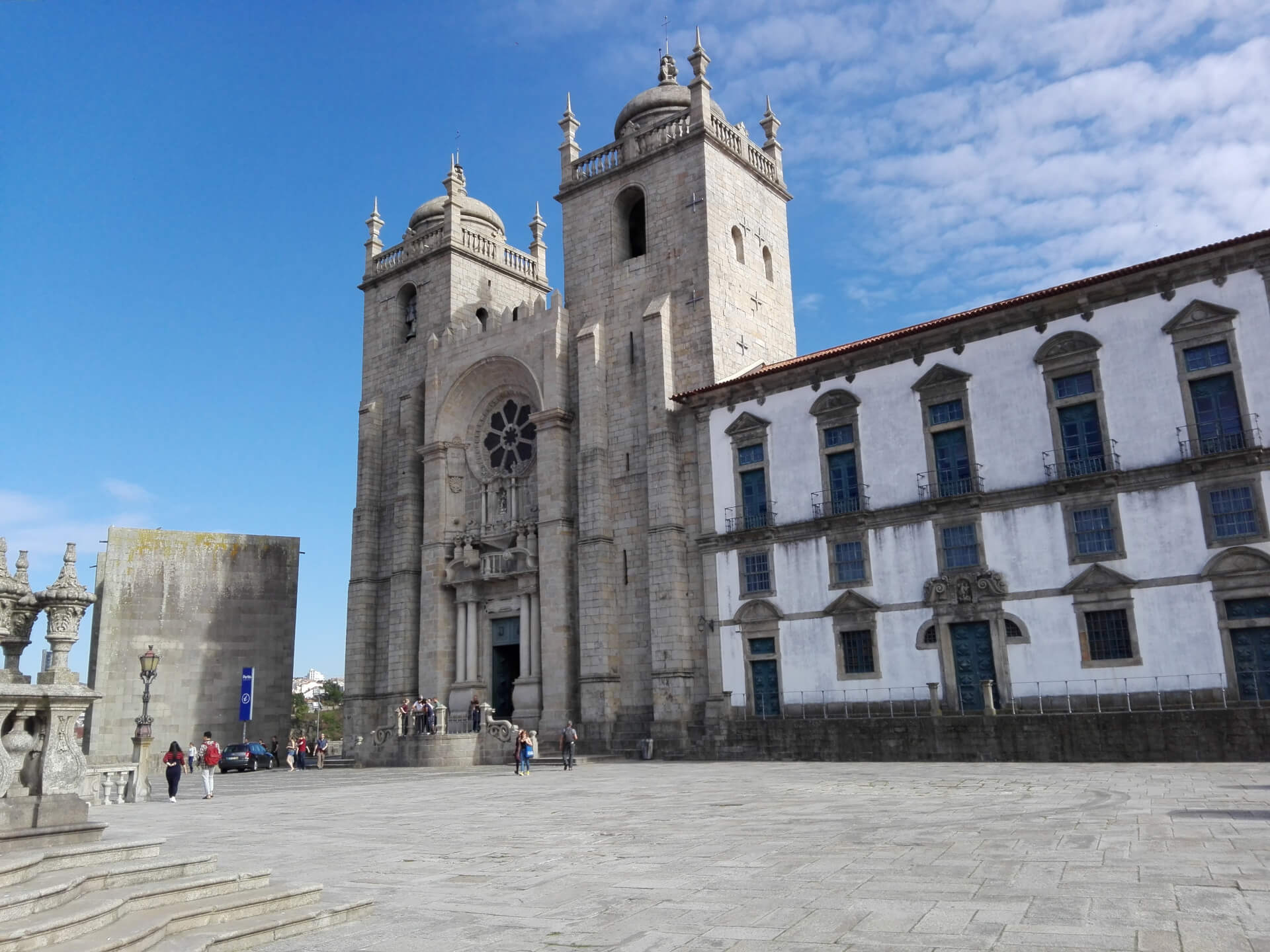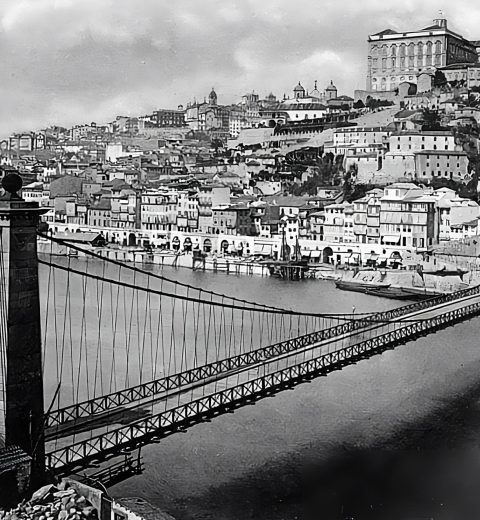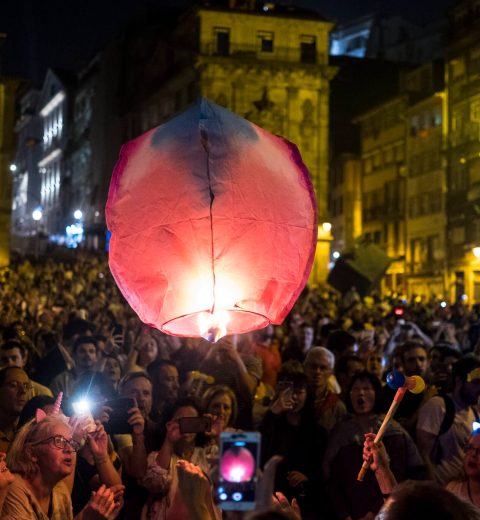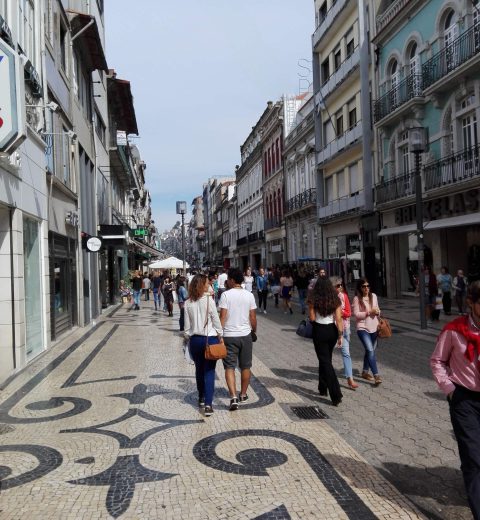The Porto Cathedral is a temple built in the 12th century on the initiative of the city’s first bishop, D. Hugo. Also known as the Church of Saint Mary of Porto, Our Lady of Porto of Eternal Salvation or Our Lady of Vandoma, which demonstrates the importance of Marian worship in it.
In the 13th century, the building reached its current volume, and in the following century the cloister, built in the Gothic style, and the Chapel of Saint John the Evangelist with the tomb of the knight João Gordo were added.
In 1387, King D. João I and Queen D. Filipa de Lencastre were married in Porto Cathedral, and the city was adorned with flowers and aromatic herbs for the celebration.
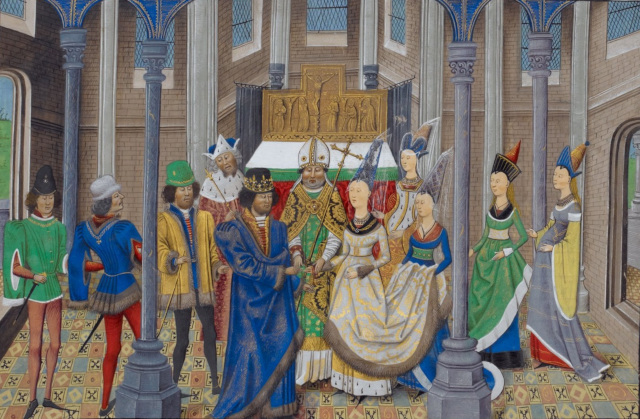
In the 17th and 18th centuries, the exterior and interior appearance of the cathedral was modified by the Baroque style, with the transformation of the portal, the north facade, the main chapel, and the Chapel of the Blessed Sacrament. There is a grand silver altarpiece executed by Portuguese goldsmiths. Various altarpieces and chapels materialize Marian worship under different titles, with the most important being Our Lady of Vandoma, the patron saint of the city and inscribed in the municipal coat of arms since the 16th century.
The Porto Cathedral is an architectural masterpiece that tells the history of the city through the centuries, with its Romanesque, Gothic, and Baroque styles.
The architectural complex also includes the grand building of the Episcopal Palace, whose construction also dates back to the 12th century. Porto Cathedral, on the other hand, is a building of Romanesque-Gothic structure, built in the 12th and 13th centuries, and underwent major renovations in the Baroque period. Inside, it retains the appearance of a fortress-church with battlements, and the beautiful 12th-century rose window and the loggia or side galilee of the 18th century, the work of Nicolau Nasoni, which overlooks the city, are noteworthy.
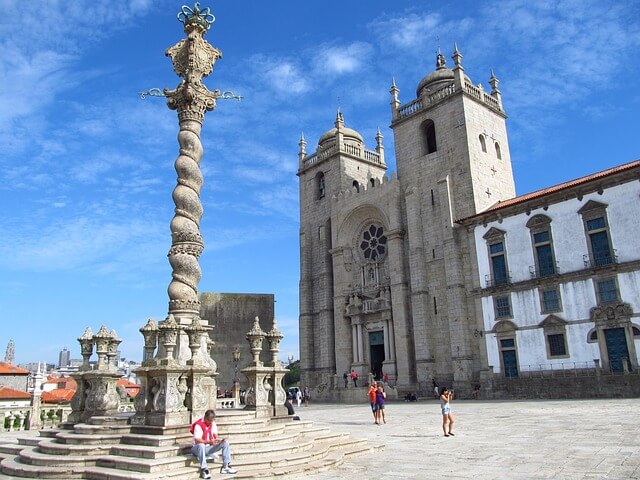
The Gothic cloister of the cathedral was initiated in the 14th century and features seven large tile panels. In the Chapel of the Blessed Sacrament, the famous “silver altar” of enormous dimensions, considered a fundamental work of Portuguese goldsmithing, stands out, with vast biblical iconography focused on the Eucharist. There is also an image of Our Lady of Silva in the right transept and a Baroque chapel dedicated to Saint Peter. In the high choir, there is a large pipe organ installed in 1985 by the firm Georg Jann.
The importance of Porto Cathedral for the city is undeniable. In addition to being a place of worship and prayer, it is a symbol of Portuguese history and culture. It is a must-visit place for tourists who come to the city, as it offers an impressive view of the old town and the Douro River.
Here, you can also see the statue of Vimara Perez (designed by Barata Feyo – 1968), which commemorates the eleven centuries of the liberation of the County of Portualense from Muslim rule.
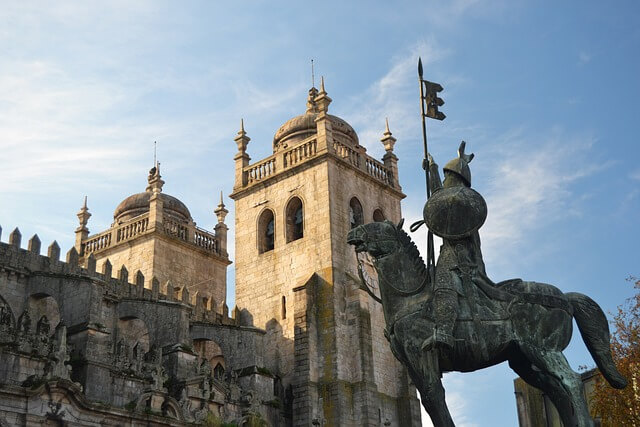
Vimara Perez was a warlord who lived in the second half of the 9th century. In 868, aided by Christian knights from the region, he conquered Portucale (now Porto and Gaia) from the Moors. That same year, Vimara Perez received the title of Count of Portucale (now the lands of the Douro Litoral), thus starting a county dynasty that would last until 1071.
In conclusion, Porto Cathedral is a historical and architectural monument of great value to the city. Its construction began in the 12th century and ended in the 13th century. It is a place of worship and prayer, as well as a symbol of Portuguese history and culture.
SUGGESTION:
The history and significance it holds for the city make Porto Cathedral one of the must-visit attractions.



